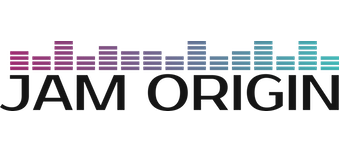I do appreciate this. I did some research.
Theoretically… velocity came from keyboards, the first MIDI instruments, and it is the force in which the key(s) struck the pad which processes the signal. For practical purposes it somewhat parallels volume, as a softer “hit” or softer “force” produces a softer volume. However - it’s more complicated because as you mention - instruments also have separate volume control knobs.
PROBLEM: If you know or understand compression in traditional audio, then these controls seem a bit confusing. In audio compression, you have a “THRESHOLD”. What is the threshold here?
Traditional audio compressors have a “RATIO”. What or where is the ratio here?
Here’s the problem - an audio compressor BEFORE the audio gets converted to MIDI is of tremendous value, in that it will help “even out” the volume level (MIDI Velocity) of the MIDI messages that is output by the converter.
HOWEVER… Jam Origin should not be an audio compressor. Guess what? There’s DOZENS of compressors already on the market. PLEASE… please, please, please don’t try to reinvent the wheel. Tell your users to use their own favorite compressor.
So these 3 controls Gain, Tone and Drive…are NOT the same controls you see on traditional audio compressors. Thus they’re confusing. What does gain really do? What does tone really mean and what effect does it have? – the use of the Curve knob is explained in the documentation (Yeah!!!) But it’s confusing…where are the numbers that show the amount of compression. Traditional audio compressors have NUMBERS next to their knobs, like 2:1 or 4:1, etc. What else that is not clear…is this to compress the incoming audio…OR… the outgoing MIDI notes?
It “seems” like something of great value would be to output a set or constant velocity, and then let the user adjust the final output audio volume. In other words - provide an option that no matter how hard or software I hit notes on the guitar, as long as the note dB is passed a THRESHOLD - it will be set to a constant velocity. Then ----- as with all good AUv3 plugins… let this parameter (the constant velocity) be controlled by MIDI CC messages (foot or expression pedal) .
I do appreciate your reply. I think the software has value…but sadly…it’s confusing. Even more frustrating - rather than improve and focus on being a conversion engine (audio to MIDI); that guitarists can use in their favorite DAW, or “rigs” (Amplitube, Bias Fx, etc.)… you’re trying to make a complete rig and AUv3 host software. P L E A S E…make it truly an AUv3 plugin, and let the users decide where and how they want to use it. It’s sooOOOOooo frustrating.
;-(
meanwhile… I can’t get it to work CLEANLY and efficiently [time for some YouTube videos explaining the disappointment]
